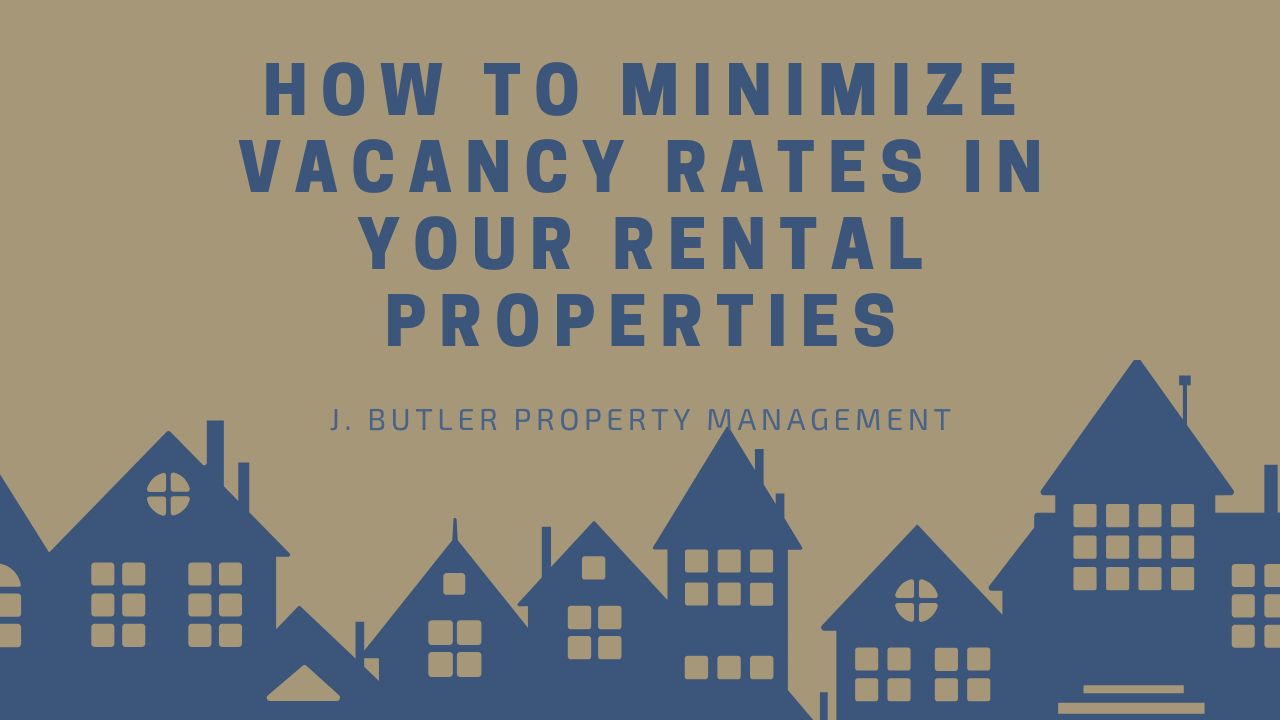
How to Minimize Vacancy Rates in Your Rental Properties
November 20, 2025
How to Minimize Vacancy Rates in Your Rental Properties
Key Takeaways
- Setting rates based on market research attracts more qualified tenants and shortens vacancy periods. Flexible lease terms can further widen the tenant pool.
- Well-maintained, modern, and clean properties with strong curb appeal and strategic interior upgrades draw more interest and lead to faster leasing.
- High-quality photos, compelling listings, virtual tours, and broad advertising across multiple platforms ensure the property reaches the right renter quickly, minimizing downtime between tenants.
One of the most critical metrics that landlords consider when measuring the profitability of rental properties is vacancy rates. That’s because extended vacancies can significantly reduce the profitability of a property.
Landlords and property managers understand that every day their property is unoccupied, they lose income.
To reduce vacancy rates, landlords need a combination of proactive management, retention practices, and strategic marketing. In this article, J. Butler Property Management will discuss the key strategies to ensure long-term investment success, stable cash flow, and consistent occupancy.
CONTACT US TODAY FOR MORE INFORMATION
Understanding Vacancy Rates
Vacancy rate refers to the percentage of rental units that remain unoccupied within a property or portfolio at any given time.
Below is the formula for calculating vacancy rates:
Vacancy rate = (Number of vacant units ÷ Total units) x 100
A high vacancy rate can result from numerous factors, including ineffective rental management, non-competitive pricing, inadequate property maintenance, and poor marketing.
On the other hand, a low vacancy rate signifies an efficient management system, good landlord-tenant relationships, and strong demand. When landlords track vacancy rates, they can assess the effectiveness of their leasing strategies, detect potential problems, and identify performance trends.

Apart from lost rental income, vacant properties incur financial burdens. Such as:
- Cleaning expenses
- Repair costs
- Advertising and marketing
- Maintenance and utilities
- Insurance
- Property taxes
Landlords and property managers who reduce vacancy rates maximize income, preserve asset value, and optimize operational efficiency.
Tips to Minimize Vacancy Rates
Set the right rent price
One of the most significant factors that influences occupancy is pricing. Even very attractive properties can stay vacant if they are overpriced. To set the appropriate and competitive rent price, landlords should conduct regular market research or analysis. Some strategies to achieve this include:
- Consulting local property managers or real estate agents for insights
- Assessing features such as location, amenities, and size
- Reviewing listings of similar properties around the same location
Landlords can gauge market trends and adjust pricing accordingly with the help of rental data tools and online platforms.
Although landlords naturally aim to maximize income, setting rents slightly below the market average will attract more potential tenants, ensure consistent cash flow, and reduce the vacancy duration. Short-term overpricing is less profitable than long-term occupancy.
We recommend that your lease terms be flexible. Some options to consider include month-to-month, six-month, or twelve-month agreements. Doing this will help to widen your potential tenant pool. Experience shows that rental properties that are flexible appeal to tenants with short-term needs.

Enhance the property’s appeal
Well-maintained, modern, and welcoming rental properties attract more potential tenants. Landlords and property managers should invest in maintenance and presentation to reduce vacancy time and have higher rental rates.
Most potential renters decide if they will rent the property or not based on the first impression. The exterior appearance of the property is crucial. Landlords should invest in exterior enhancements that will make their property stand out. Some tips to boost your curb appeal include:
- Power wash sidewalks and driveways
- Updated lighting fixtures
- Clean landscaping
- Mowed lawns
- Apply a fresh coat of paint on the walls, doors, and trims
Interior features in rental properties also appeal to tenants. Landlords should perform upgrades in this area. Modern renters value design, efficiency, and comfort. That is why you should conduct strategic upgrades, such as smart home features, contemporary flooring, and energy-efficient appliances, to make the rental property more competitive.
Tenants are quickly attracted to properties that are safe, functional, and clean. Landlords should conduct routine inspections and prompt repairs to maintain their reputation and their property’s condition.
Market the rental property effectively
Rental properties hardly stay vacant if they are advertised to the right audience. A well-executed marketing strategy will help you to significantly reduce the vacancy period of your rental property. Ensure you approach suitable audiences for your rental property with a professional and persuasive presentation.

Below are some marketing strategies that will help you achieve this
- Invest in professional photography and videography: Modern renters are attracted to high-quality images on online listings.
Landlords can showcase the best features on their properties, key amenities, and well-lit rooms through professional photography and videography. Conduct a virtual tour or video walkthrough of the rental property to enhance engagement..
- Ensure that the listing is compelling: In the property description, highlight major employers, entertainment, restaurants, shops, transportation, and proximity to community amenities.
Use multiple channels to advertise the rental property. You can market the property on popular rental websites, social media platforms, local bulletin boards, community newsletters, and through real estate agents or property managers. Start the preparation process for marketing as soon as tenants give notice.
CONTACT US TODAY FOR MORE INFORMATION
Final Thoughts
Consistency and foresight are the foundation of vacancy reduction. To enjoy significant financial performance and steady occupancy, landlords should adapt to market shifts, maintain transparency with tenants, and actively manage their rental properties.
Having an efficient property management strategy will help you create a consistent and high-quality tenant experience. To significantly reduce the vacancy rates on your rental property, we recommend hiring the services of a professional property management company. These firms have the expertise to ensure that rental properties are always occupied.
Ensure that you avoid common mistakes that increase vacancy rate, such as overpricing the property, neglecting maintenance, failing to market the rental property early, ignoring communication, and being inflexible. Contact J. Butler Property Management to learn how to fill vacancies in your rental properties fast!


